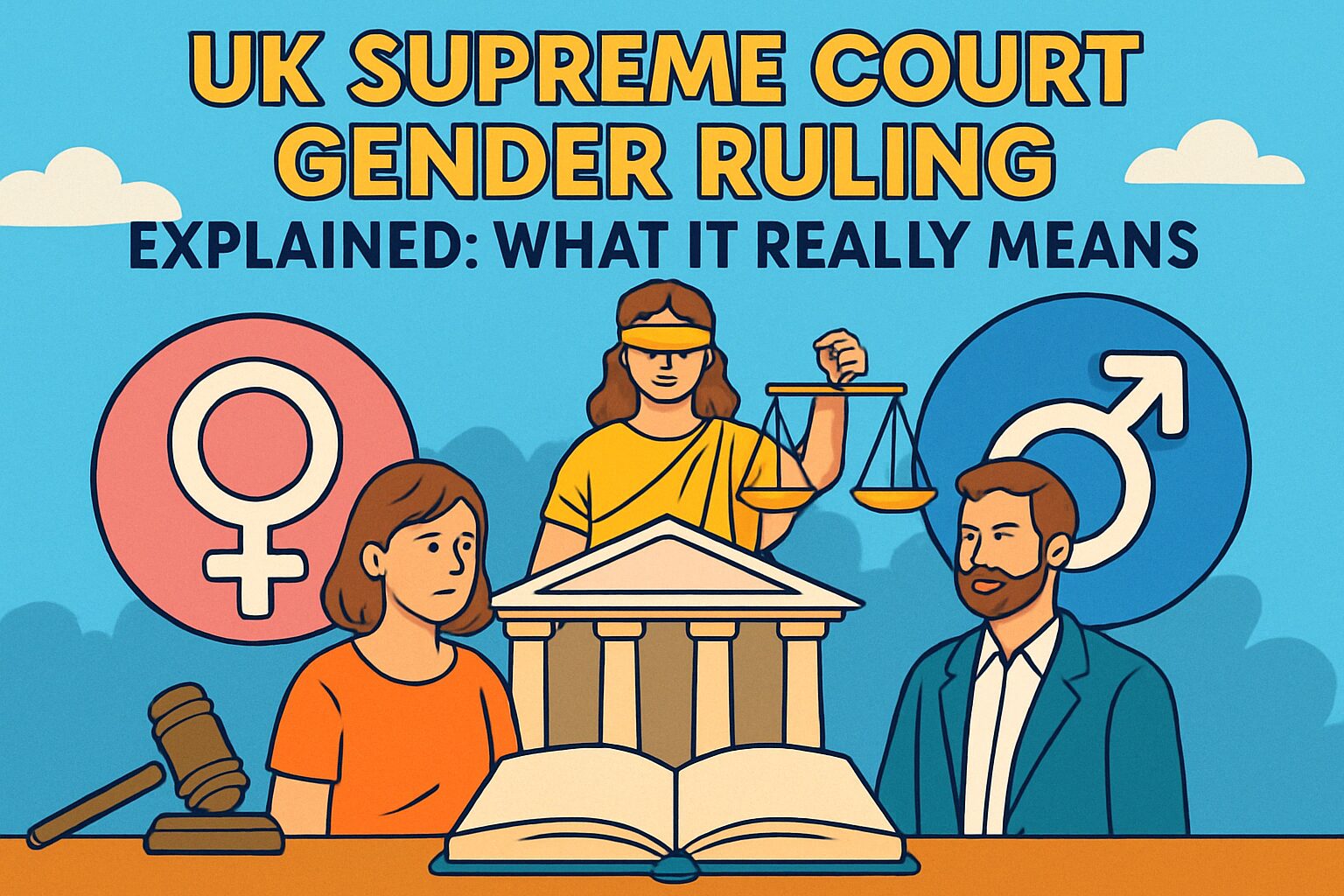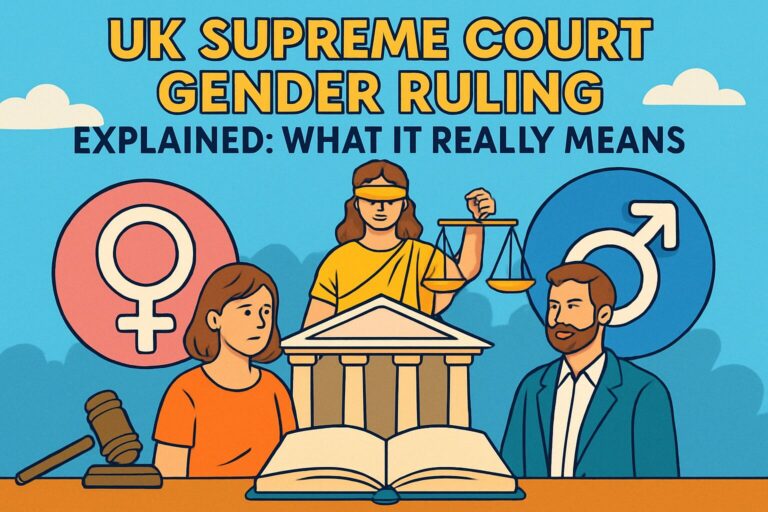UK Gender Ruling Explained for Young People
UK Gender Ruling Explained for Young People
The UK gender ruling for children came into effect yesterday (April 16, 2025), when the UK Supreme Court actively defined “woman” in law as someone who is biologically female. Consequently, this important ruling affects how children and adults experience the application of the Equality Act 2010, especially in schools, sports teams, and other spaces. Moreover, this UK gender ruling helps children understand how our society balances sex-based rights with gender identity. Therefore, young people should learn about this ruling because it impacts their daily environments.
What is the UK Gender Ruling?
The UK Supreme Court made an important decision yesterday (April 16, 2025) that defines “woman” in law as someone who is biologically female. This ruling affects how the Equality Act 2010 works in places like schools, sports teams, and other spaces. The decision helps clarify how our society balances rights based on biological sex with respect for gender identity. It’s worth understanding because it impacts many environments where young people spend their time.
What Happened?
The Supreme Court decided that when UK laws mention “women,” they’re referring to people based on biological sex (recorded at birth) rather than gender identity (who someone feels they are). This legal clarification affects how certain rules and spaces are organized.
Why This Ruling Matters
This decision matters because many places use sex-based divisions:
- Sports teams at school
- Changing rooms and bathrooms
- Some youth clubs and activities
- Certain health services
Understanding the ruling helps make sense of changes you might notice and discussions happening around you.
What the Ruling Actually Means
The ruling doesn’t take away anyone’s right to respect. Transgender people (those whose gender identity differs from their birth sex) still have protection under anti-discrimination laws.
What changes is how organizations balance different needs:
- Girls’ sports teams may include only those who were born female
- Some services can be organized specifically by biological sex
- Schools might update their policies about certain spaces
Important Terms to Understand
Biological sex: The physical characteristics someone is born with that typically identify them as male or female.
Gender identity: How someone feels about their own gender, which might match or differ from their biological sex.
Transgender: When someone’s sense of their gender doesn’t match the sex they were assigned at birth.
Equality Act: A UK law that protects people from unfair treatment for various reasons, including both sex and gender identity.
Different Viewpoints
People have different opinions about this ruling:
Some support it because:
- It creates clearer rules and boundaries
- It protects spaces specifically designed for girls and women
- It recognizes that biological sex matters in certain situations
Others have concerns because:
- It might make transgender young people feel excluded
- It could create more difficulties for transgender youth
- They believe gender identity should be the deciding factor in all situations
What Hasn’t Changed
Despite the ruling, these important principles remain:
- Everyone deserves kind treatment and respect
- Bullying others because of who they are is wrong
- Transgender people still have important legal protections
- Schools must provide safe environments for all students
Thinking About Complex Issues
When engaging with topics like this:
- Listen to different viewpoints
- Consider how rules affect various people differently
- Remember that real people with real feelings are affected by these decisions
- Talk with trusted adults when you have questions
Complex topics rarely have simple answers. Different people have different experiences and needs, and finding fair solutions requires thoughtful consideration and respect from everyone.
Members Only
You need to be registered and logged in to access this learning resource and other member only content. It only costs £1.99

